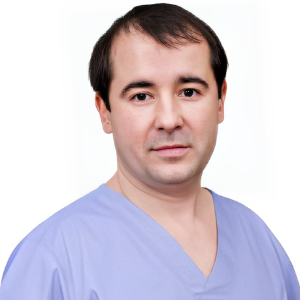Title : Possible protection mechanism of cells by sodium fumarate during warm ischemia in partial nephrectomy
Abstract:
Warm ischemia is widely used in the treatment of renal cell carcinoma for improvement of tumor visual assessment, minimizing blood loss and providing hemostasis during partial nephrectomy. However, the resulting process of acute hypoxia leads to critical consequences for the health of patients already after 25-30 minutes of the blocking of blood perfusion through the vascular bed of the kidney. The use of antihypoxants based on mitochondrial substrates, in particular sodium fumarate, can increase the acceptable duration of the operation and reduce the degree of damage immediately after nephrectomy as well as in the process of kidney recovery. Understanding the molecular and cellular mechanisms of nephroprotection may help to validate both the exact duration of blood perfusion blocking and the subsequent process of resected organ recovery. Since 95% of the oxygen supplied to cells is consumed by mitochondria, we investigated the effect of sodium fumarate on the mitochondrial metabolic parameters of MDCK epithelial cell culture under hypoxia conditions. For this purpose, we estimated the pharmaceutical "Konfumin", which is used in surgical practice. The obtained results showed a significant decrease of apoptosis level in the presence of sodium fumarate in comparison with the control after 1, 2 and 3 hours of incubation under conditions of complete oxygen binding by sodium dithionite. Due to the reversible action of complex II of the mitochondrial electrotransport chain (ETC), sodium fumarate ensures the functioning of the NADH dehydrogenase complex in the absence of oxygen, which is experimentally confirmed by the part conversion of the coenzyme into the oxidized nonfluorescent form. However, this does not lead to significant improvements in the ETC activity and maintenance of the mitochondrial membrane potential at a physiologically acceptable level: in the model conditions of hypoxia without antihypoxant as well as in the presence of sodium fumarate, the formation of the proton gradient is supported by the inverse action of complex V which is ATP-consuming process. At the same time, it was shown that sodium fumarate action changes the level of mitophagy leading to the utilization of defective mitochondria, as well as normalization of the reactive oxygen species rate production in comparison with control. The observed effect can be explained by the known stabilization and increase in transcription of hypoxia-inducible factor 1α and, accordingly, activation of protective mechanisms during hypoxia. It can be hypothesized that the use of 15% sodium fumarate solution will increase the time of warm ischemia during renal resection to 45-60 min. However, confirmation of this requires additional research.
Audience Take Away:
- Understanding the mechanisms of the processes of changing the functional state of the kidney at the cellular level allows us to develop new approaches to nephroprotective therapy, and consequently, to minimize the development of complications in the postoperative period and increase the overall survival rate of cancer patients.
- The application of sodium fumarate allows to increase the time of warm ischemia in organ-saving surgery of renal cancer up to 40 - 50 minutes.
- The research of renal tissue bioenergetics, investigation of the role of reactive oxygen species in the formation of acute renal injury during hypoxia and reperfusion at the cellular level allows to improve the results of treatment of oncologic patients.



